Welcome guest, is this your first visit? Create Account now to join.
Welcome to the NZ Hunting and Shooting Forums.
Search Forums
User Tag List
+ Reply to Thread
Results 16 to 30 of 38
Thread: Drop chart help
-
18-01-2023, 09:06 PM #16
-
-
18-01-2023, 09:10 PM #17
assumably your load is "somewhat normal" off top off head 44.5grns will be below max but above midpoint..so SHOULD BE CLOSE TO the approximate many variables of the time this chart was made...if its hotish load it will be closer to the .30/06 150grn line
either way it shows how your 320yards its entirely doable WITHOUT PISSING AROUND.....
if someone dissagrees,feel free to post up two different curve picture drop charts with velocity at half way and max for approxamately that load..... difference in real world will be stuff all.75/15/10 black powder matters
-
19-01-2023, 07:12 AM #18Member

- Join Date
- Jan 2019
- Location
- South Canterbury
- Posts
- 1,657
What Micky Duck and Shift14 have said works. I've done the same by setting up targets at 100, 200 and 300 metres and checking elevation or drop at those points. Then put data into Strelok app with BC of bullet and adjust MV until numbers match your targets.
Below is my 270 with 130g powershoks. Drops are almost to millimeter.
( Disclaimer, I've only shot targets to 300m )
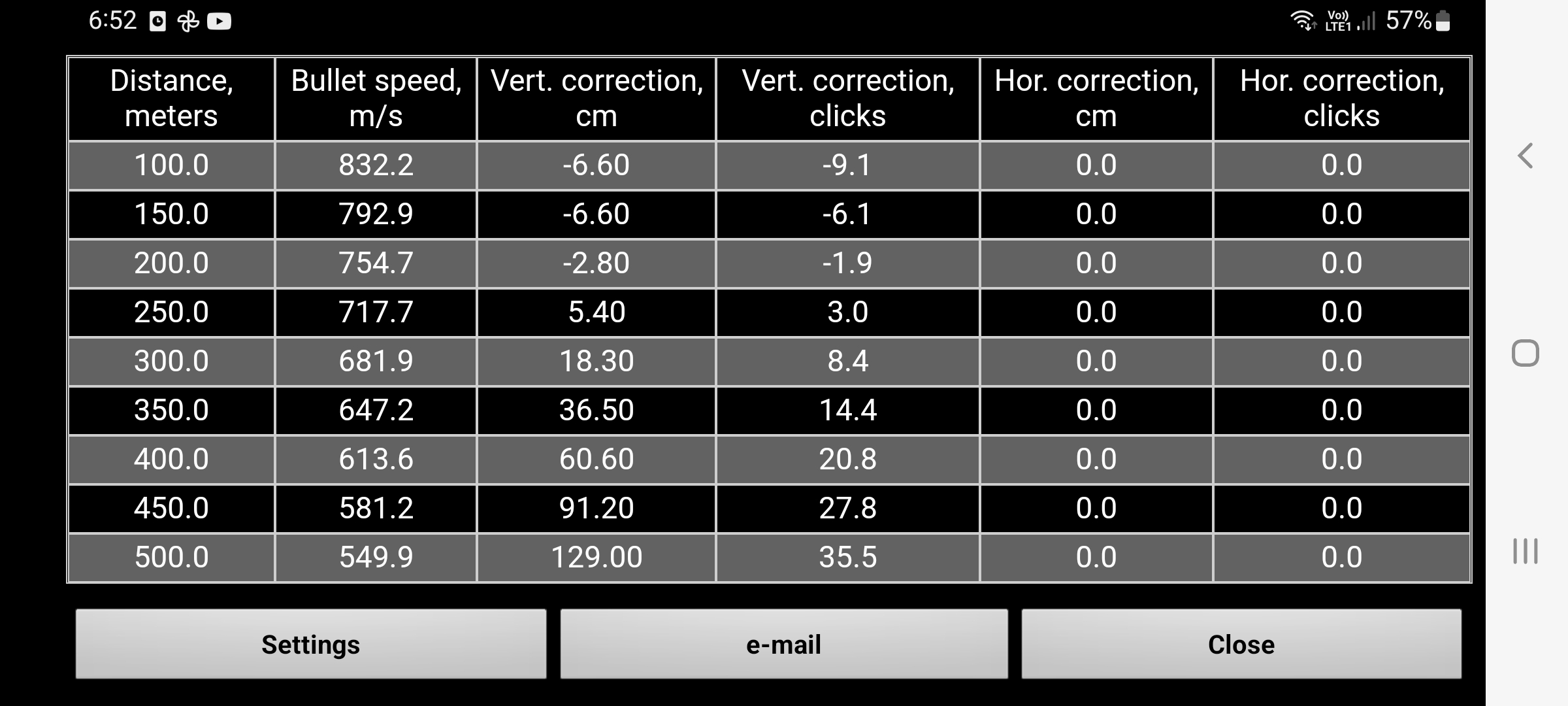
Last edited by RUMPY; 19-01-2023 at 07:14 AM. Reason: Add more content
-
19-01-2023, 07:38 AM #19
If you can get to Tauranga I have a chrony and a place to verify out to 300+
-
19-01-2023, 09:31 AM #20
Your precision requirements will determine your approach. If your expectation is that the rifle and load need to be capable of hitting very small targets at your self-imposed maximum shooting range of 320m, then you will likely want to either know the drops from your own measurements or be satisfied with predicting these from an external ballistics calculator where a chronographed muzzle velocity will be a required input. In answer to your question I think either approach will be fine. Measure the muzzle velocity and use a trajectory calculator if access to a 320m range is not convenient, otherwise go ahead and record the actual drops. Both together are not needed, though the one can be used to verify the other. The deviation from the actual drops by instead using a calculator in combination with an accurate MV as an input to predict these will be insignificant out to 320m. Best to also note here that having gone and found your trajectory by either method, if shooting out to only 320 metres, you can then pretty much neglect any day-to-day or situational variables that contribute to changes in the point-of-impact other than if shooting steeply up- or down-hill, and of course movement from wind.
You will still need to be able to accurately zero your rifle — and I would recommend doing this on an ongoing basis to get a handle on how well your equipment holds its setting. If you can dial your scope – or have and will use a tree-style scope reticle – choose either a 100m or 200m zero; it doesn’t really matter much which. If you can’t dial your scope and have a plain duplex reticle then use a 200m zero as it will be easier to raise the point of aim for the smaller elevations required at maximum range that result from the more distant zero. So access to a 200m range for your zeroing checks may determine your approach.
If on the other hand the rifle and load are to be used where the allowable deviation in the points of impact away from the point of aim can be that much larger for the shooting to still be considered successful (such as perhaps for hunting deer) then I would say neither the measuring of drops or the muzzle velocity is necessary; enjoyable to carry out of course as with all shooting, but not necessary. MD’s earlier advice is then applicable.
As with many of the questions asked here, we are often short of a few pieces of the puzzle to start with, and this can result in the replies from members being quite varied and often seeming contradictory. This may be a result more of the assumptions being made to fill in the information gaps as much as differences in approach. Knowing your "short" barrel length would have been helpful for example. It also then becomes difficult for yourself to filter the quality of advice unless the replies you receive have laid out the assumptions being made to cover off the missing detail.
In line with this, I’m also going to also then make an assumption, based on the advice being requested, that there may not be an expectation in the equipment and yourself of always being able to place your shots within say 40mm of the point of aim at 320m. This is a 1MOA grouping and difficult enough to achieve off a bench let alone in field conditions at that range. If this is true, then as above you can dispense with the tall-target drop assessment and/or the chronographed MV as long as you choose an appropriate zeroing distance.
The reason for this, and the point MD made, is well demonstrated by plotting the trajectories for the likely minimum and maximum muzzle velocity from your rifle rather than for a single MV. With the bullet and load you have given, the MV will be close to 2500ft/second from a 15” barrel and 2700ft/second from a 20” barrel, so let’s have a look at the difference this makes, while knowing that your load will be somewhere within this range, but without knowing the exact MV?
Using in this case the JBM Ballistics online calculator (I’ve also taken the liberty of increasing the scope height to 45mm and filled in the other variables with typical entries that to 320m make very little difference to the outputs); if you decided to take shots believing that the actual MV was midway between these two extremes at 2600 ft/sec, giving a point-of-impact predicted at 16.5” below the line of sight at the max range of 320m and with a 200m zero, then you would never be more than 35mm away if the velocity was by chance either the full 100 foot-per-second faster or slower. Your actual look-up corrections, should you get to measure them, will be found within the bounds of the 2500 ft/second trajectory shown in blue and the 2700 ft/sec in red graphed below.
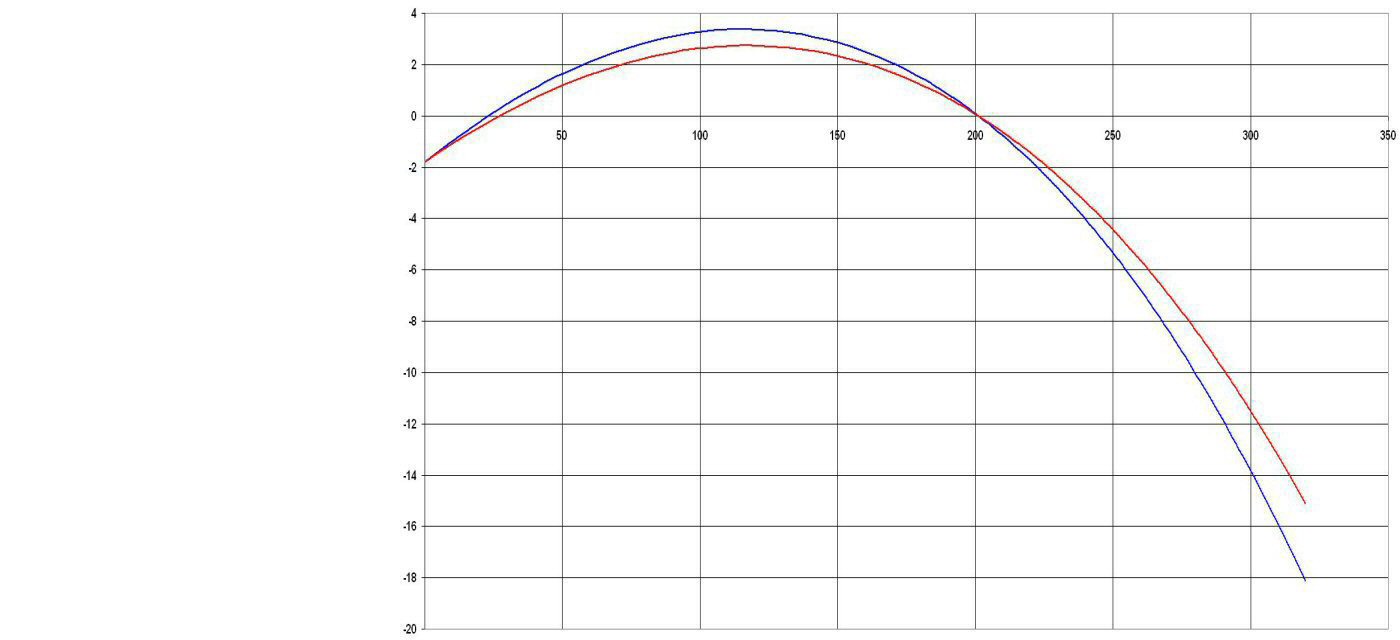
You’ll need to decide if you can adjust your point of aim upwards at your maximum range to accommodate this amount of drop without a dial-up scope. It can be read off the graph that limiting yourself to 300m instead brings the correction needed back to about 13 inches, an amount that might be more manageable?
Similarly you may not be particularly happy about the bullet rising to around 3” above the line of sight at around the 120 metre mark. This can be addressed by pulling the zeroing distance back to 100 metres. I’ve graphed what the expected trajectories will then look like, again the 2500 ft/sec MV in blue and the 2700 ft/sec MV in red.
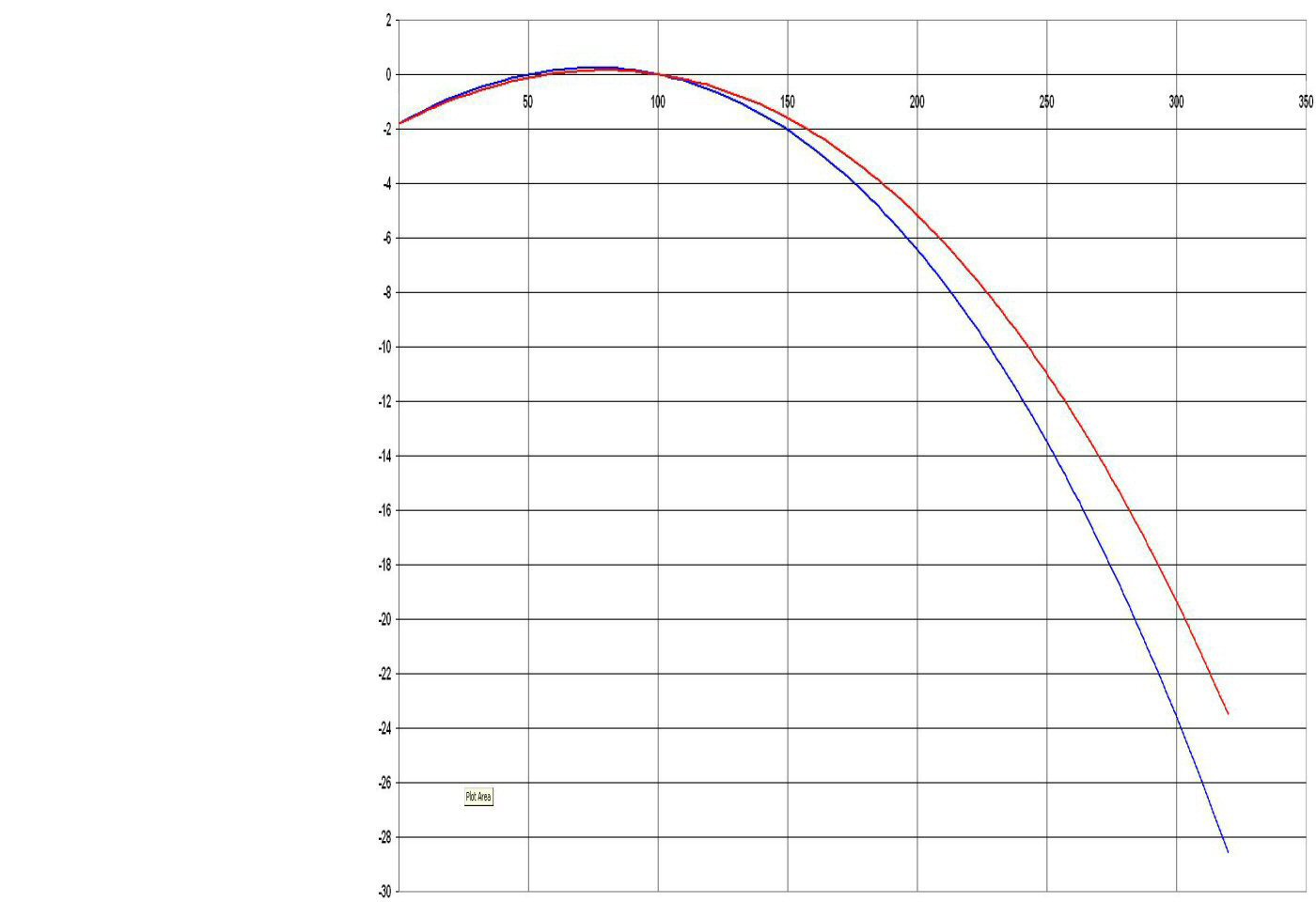
While the bullet rise issue is now fixed, the problem for a non-dial-up scope is then transferred out to your maximum range where – if you assume the predicted 25.9” drop below the sight-line for a 2600 ft/sec muzzle velocity – you may be as much as 70mm off from the true drop if by chance the true MV was at either end of the velocity extremes.
Even if you knew the actual muzzle velocity, or had recorded the actual drops, so were certain of where the true drop lay out at 320 metres, I’m not sure how one best deals with this amount of fall below the line of sight without a dial-up scope, so I would propose that a 200m zero is your best bet with a set-and-forget style reticle adjustment.
All interesting information on which to ponder? As usual there is a lot of mixing of metric and imperial dimensions in the above, but we are all used to this now.
-
19-01-2023, 11:30 PM #21
Yeah I dunno. I started getting into LR shooting in 05. I have shot animals and targets at reasonable distances. It’s easy to say I won’t shoot past 350 but put a decent stag in front of you and with no other option you’d have a crack. Run your load through a chrony. Get the thing bang on at 200 yds and make your chart from there. It’s better to be “OCD” about things like this.
At least if an opportunity did show up you know exactly where your bullets going. You kind of owe that to a deer to kill it as cleanly as possible.
-
20-01-2023, 12:52 PM #22Member

- Join Date
- Mar 2012
- Location
- Waikato
- Posts
- 2,188
In my humble opinion a chronograph is always a bit approximate.
It's difficult to test a chrono and calibrate it.
Differences in distance to muzzle, angle relative to bullet path and for shooting chrony if its not fully opened out straight can all give a consistent error (bias) that would vary from day to day.
An estimate like 2500fps will get you on paper or "Minute of Deer" at 100m and 200m until you can get down to TECT park (Tauranga). Once you've got tight 5 shot groups there at 100 and 300m plus measure your scope height to the nearest millimetre, you can adjust the nominal velocity you plug into your ballistic calculator to match and use that.
Also, my opinion only, an elevation error of 6" (150mm) is too much to accept. Even over or under 3" when added to aiming, wind and grouping errors add up to too many poor shots past 200m. Beyond about 150m you should allow something, even if its just "Is it closer to 200m or 100m ?". Unless tou're shooting well over 3000 fps then your Point Blank Range (Aim Dead On) should be 200m max.
If you want 300 metres PBR, then you should be shooting a 270 or 2506 with the lightest bullets you can get.
-
20-01-2023, 04:16 PM #23
looking at top graph Puffin has so kindly provided..225-235 would be the pointblank maximum if you use the old theory of how far can I shoot down an eight " tube and keep bullet inside it...so in theory inside vitals of a deer with hold on centre of shoulder point of aim
its GOOD to have these discussions...and be able to keep it civil and see others point of view....
not everyone dials up (I sure as shit dont)
and not everyone is happy to limit range to under 300 yards or thereabouts.75/15/10 black powder matters
-
20-01-2023, 05:02 PM #24
This is an interesting read as I'm about to go down the almost same route with my short 308 but for now using only factory ammo until I can get dies and supplies sorted which could be 6 months down the track.
Running point blank online and using Federal Powershok it gives me 2.1" high at 100 yards with a 200 yard zero. However I cannot enter all the relevant data yet such as scope height etc until I can get a scope onto the rifle next week.
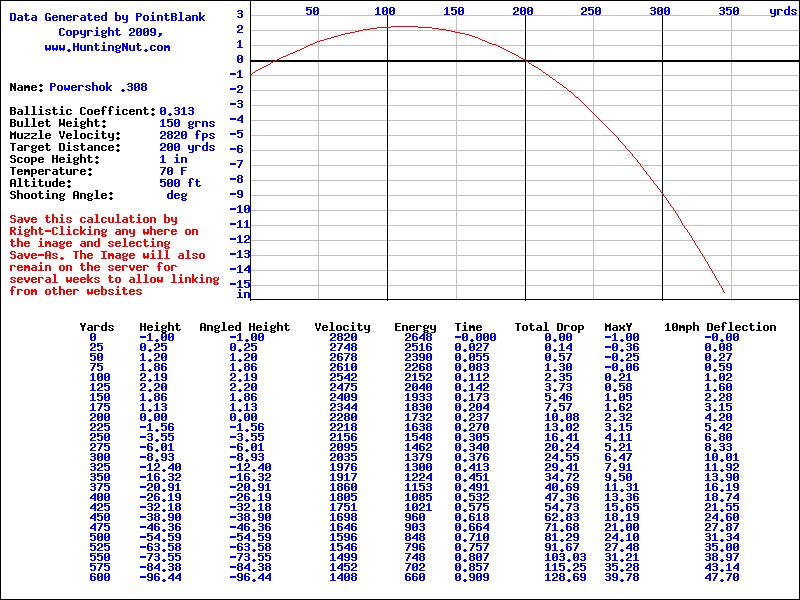
-
20-01-2023, 05:16 PM #25
piece of piss to use isnt it LOL.
75/15/10 black powder matters
-
20-01-2023, 05:55 PM #26Member

- Join Date
- Dec 2011
- Location
- Southern Alps
- Posts
- 4,997
My 308 with a 18 inch barrel,using Hornady Superformance 150ssts.2.5'' inchs high at a hundy give me 2.5'' low at 276yds.Scope is 2" high.Thursday morning spotted 2 deer at 330 yds.Quick dial up to 4 inchs and dropped them both.
2.5'' high is a nice setting to leave scope on all the time.I know i can go shooting 300yds on reds aiming a tad higher up the sholder.
I just zero at a hundy,leave scope on zero,shoot for the drop at 200 and 400yds.Work out drop chart to suit what yr rilfe is shooting.Just dont change ammo.
-
20-01-2023, 06:26 PM #27
-
20-01-2023, 06:39 PM #28
I quite agree, and also my style, but we can only go on what the OP has told us and answer his queries accordingly, and that was with a limit of 320m. This limit brings other options into the mix that I wanted to lay out in terms of the pros and cons and requirements as factually as I could without really guiding one way or the other. If he is going to be tempted beyond 320m then I agree that he will have little choice but to use a dial-up scope in combination with a look up table that should be verified from his actual drops. Quibbling over ±40mm variation in POI because of the unverified muzzle velocity seems pointless if shooting ability will be limitings hits to the proverbial barn door. Too much we don't know here. At the end of the day I would point the OP in the direction of the Dinner Plate Challenge as this brings everything into the mix to give a maximum ethical kill range.
-
20-01-2023, 06:41 PM #29
-
20-01-2023, 07:23 PM #30Member

- Join Date
- Dec 2011
- Location
- Southern Alps
- Posts
- 4,997
Oh i do know the drop at 500 and 600yds.It would have to be a good broad side big stag for a 500yd shot.All tho iv have shot a fallow buck thru the sholders at 437yds,dropped on the spot.It doesnt hurt every 6 months or so,have a few shots at 300-400yds.Keeps you in practice.
Similar Threads
-
Drop Chart and Ballistic Solver Sign Conventions
By Magnetite in forum Reloading and BallisticsReplies: 14Last Post: 17-06-2022, 11:13 AM -
What do you write on drop chart?
By uk_exile in forum ShootingReplies: 28Last Post: 24-12-2020, 10:21 PM -
Drop chart subsonic 22
By Bill999 in forum Varminting and Small Game HuntingReplies: 28Last Post: 16-08-2015, 04:21 PM -
drop chart via JBM Ballistics - experience?
By Speill in forum Reloading and BallisticsReplies: 10Last Post: 12-08-2012, 10:59 AM -
My Dumb Q - Making a drop chart
By Barefoot in forum Reloading and BallisticsReplies: 6Last Post: 23-05-2012, 06:21 PM
Tags for this Thread
Welcome to NZ Hunting and Shooting Forums! We see you're new here, or arn't logged in. Create an account, and Login for full access including our FREE BUY and SELL section Register NOW!!





 50Likes
50Likes LinkBack URL
LinkBack URL About LinkBacks
About LinkBacks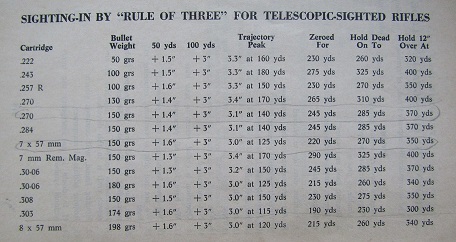




 Reply With Quote
Reply With Quote




Bookmarks